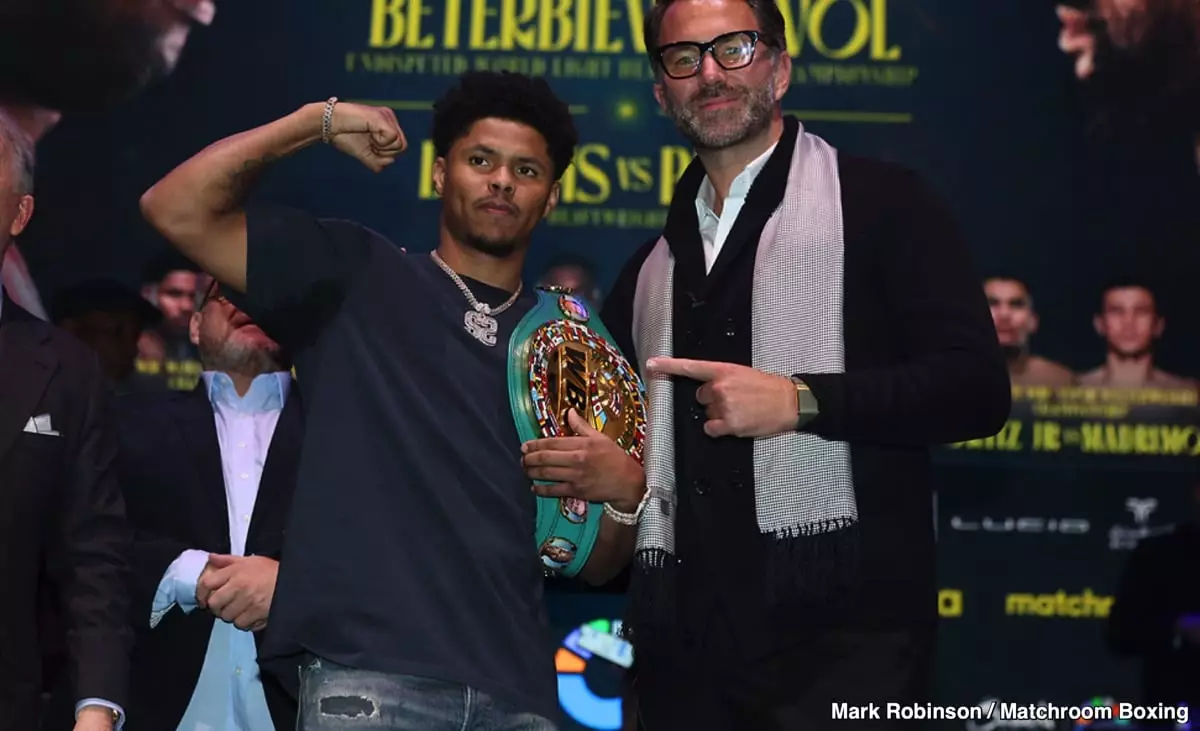Boxing, as a sport, transcends mere athletic competition; it’s a cultural phenomenon vividly colored by the personalities, styles, and narratives of its fighters. Recently, former champion Mikey Garcia voiced his critical opinion on the potential matchup between Shakur Stevenson and Gervonta Davis, stirring dialogue among fans and professionals alike. Garcia’s critique delves into the nuances of fight styles, the perceptions of excitement by fans, and the often-commercial nature of the sport, highlighting the unavoidable realism that exists within boxing.
Shakur Stevenson has established himself among boxing’s elite with a spotless record of 22 wins, 0 losses, and 10 knockouts. His defensive prowess, speed, and adept counter-punching have earned him accolades. However, as Mikey Garcia pointedly noted, Stevenson’s approach is not aligned with the traditional expectations of an exciting fighter. While Garcia respects Stevenson’s immense talent, he fears that a potential bout against Gervonta “Tank” Davis could result in a lackluster display, lacking the explosive engagements that draw fans to the sport.
Garcia states, “His talent is great, but as a fight fan, that turns me off,” which suggests that the appeal of a fighter extends far beyond mere victory. Many fans crave action—power punches flying, the thrill of near-knockouts, and the visceral emotions tied to aggression in the ring. Stevenson’s counter-punching style, while effective, paints him as a fighter who prioritizes winning over the entertainment aspect of boxing. This poses a significant dilemma: victory is paramount, but must it come at the expense of the spectacle?
The Fight Fan Perspective
Garcia’s perspective is particularly illuminating in the context of the boxing audience. As fans, we are often drawn to fights that promise excitement and unpredictability. Stevenson’s style, rooted in a defensive strategy and careful pacing—though undeniably skillful—fails to elicit the same emotional response. His approach may lead to tactical victories, but the thrill of a dramatic fight is absent.
“Shakur is going to fight his fight regardless of what the critics and fans want to see,” quips Garcia, indicating that the fighter is steadfast in his methodology. However, this raises pertinent questions about fan engagement and the marketability of fighters in an era dominated by entertainment value. Will the lack of fan-friendly bouts hinder Stevenson’s marketability and potential financial success?
The Allure of Other Matchups
Mikey Garcia posits an intriguing alternative, expressing a preference for Gervonta Davis to square off against other dynamic fighters like Vasiliy Lomachenko. Lomachenko, known for his footwork and offensive tenacity, seems to blend skill with the kind of entertaining style that captivates audiences. Garcia believes fans would relish watching Lomachenko battle Davis, suggesting a clear divide between fighter styles that generate buzz versus those that, while technically proficient, do not engage the audience’s spirit.
In the ever-commercial landscape of boxing, matchups like Davis vs. Lomachenko might draw higher viewership and profit due to their ability to deliver excitement. This reality forces Stevenson to reconsider how his fighting style is perceived: is it worth holding onto a pure boxing approach if it jeopardizes his attractiveness as a marketable fighter?
The concerns raised by Mikey Garcia bring to the forefront the undeniable intersection between boxing as a sport and as a business. For fighters like Stevenson, who aim for greatness in terms of skill, there lies a complex challenge in balancing personal integrity in style and the commercial pressures to entertain. While Shakur Stevenson might be on a relentless quest for victory within the squared circle, the question remains whether his methods align with fan expectations and financial success.
Meanwhile, promoters and matchmakers must navigate this intricate terrain, balancing genuine fight potential against marketability. In the end, the excitement of boxing hinges not just on talent, but on the ability of fighters to engage with both the sport and its passionate audience. Only time will reveal the lasting impact of these stylistic divides on the legacy of such fighters and the future landscape of boxing.

